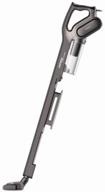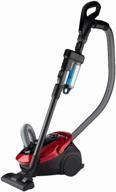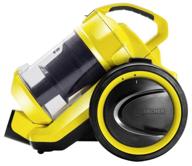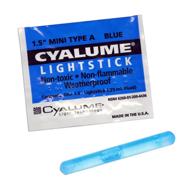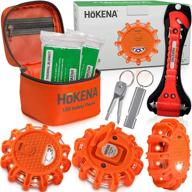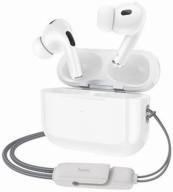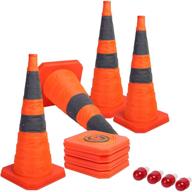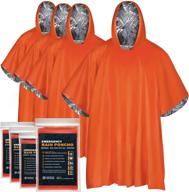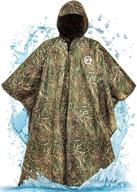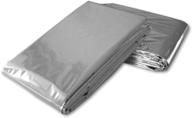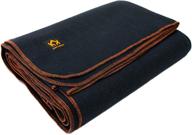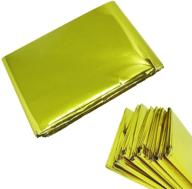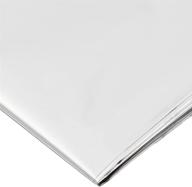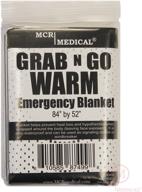Similar products
First Aid Kits - Essential Items, Treatment Options, and Mobile Kits
Having a well-stocked first aid kit can help you respond quickly and effectively to common injuries and illnesses. First aid kits come in many sizes with different contents depending on the intended use. Here we'll look at some essential items to include, treatment options first aid kits enable, and the benefits of portable kits.
Essential First Aid Kit Items
While first aid kit contents can vary, most kits should contain these basic supplies:
- Adhesive bandages - These help protect minor cuts and scrapes from infection.
- Gauze pads and rolled gauze - These help stop bleeding and protect wounds.
- Medical tape - Used to secure gauze pads and other dressings.
- Antiseptic wipes - Clean dirt and debris from cuts and scrapes.
- Antibiotic ointment - Helps prevent infection in wounds.
- Aspirin or acetaminophen - For treatment of pain and fever.
- Scissors - Can cut tape, gauze, clothing, etc.
- Tweezers - For safely removing splinters or debris.
Treatment Options
Having these supplies on hand enables prompt treatment of common minor injuries like:
- Cuts - Clean with antiseptic wipes, apply antibiotic ointment, cover with gauze or bandages.
- Scrapes - Clean wound, remove debris with tweezers, apply antibiotic ointment and bandage.
- Blisters - Clean, drain if necessary, cover with gauze and medical tape.
- Sprains - Elevate, apply ice pack, and wrap with elastic bandage.
- Burns - Cool burn under cool water, cover with sterile gauze, and take pain reliever if needed.
For severe injuries, first aid can help stabilize the victim while waiting for emergency responders.
Benefits of Portable Kits
Having a first aid kit stored in your home is essential. But portable kits can provide benefits:
- In the car - Helps treat injuries from accidents while traveling.
- At work - Provides fast access to supplies for workplace injuries.
- Hiking or camping - Allows treatment of cuts, sprains, stings, etc if away from medical care.
- In emergency bags - Supplies for home/work emergency preparedness kits.
Portable kits should contain essentials like bandages, gauze, tape, antiseptic, and medication. Customize based on likely needs - add tweezers for splinters at work or an emergency blanket for hiking kits.
Well-stocked first aid kits allow prompt treatment of minor injuries and illness. Tailor kits to your specific needs and have supplies on hand where they are most likely to be needed.
Fire Extinguishers - Types, Uses, and Maintenance
Fire extinguishers are an essential safety device in many homes and businesses. They allow you to act quickly to put out small fires before they spread and cause major damage. Here we'll look at the different types of extinguishers, their intended uses, and tips for maintenance.
Types of Fire Extinguishers
There are several different types of fire extinguishers based on the substance they contain:
- Water - Typically used for Class A fires involving ordinary combustibles like wood, paper, cloth, trash, etc.
- Foam - Also effective on Class A fires. The foam helps coat flammable surfaces and smother the fire.
- Dry Chemical - Typically rated for Class B and C fires. Used on flammable liquids like grease, gasoline, oil, etc. Also effective on electrical fires.
- Carbon Dioxide (CO2) - Used on Class B and C fires. Does not cause corrosion like dry chemical extinguishers.
- Clean Agent/Halotron - Designed for Class A, B, and C fires. Often used in computer rooms or around delicate electronics.
Using Fire Extinguishers
It's important to use the right type of extinguisher for the specific fire situation:
| Class of Fire | Type of Extinguisher |
|---|---|
| Class A (Ordinary Combustibles) | Water, foam |
| Class B (Flammable Liquids) | Dry chemical, CO2, clean agent |
| Class C (Electrical Equipment) | Dry chemical, CO2, clean agent |
Always make sure to evacuate people from the area and call emergency services even after attempting to use an extinguisher.
Maintaining Your Fire Extinguishers
To ensure fire extinguishers are ready when needed, regular maintenance is essential:
- Inspect - Check pressure gauge monthly. Make sure the nozzle is clean and unobstructed.
- Test - Have a professional test extinguishers annually to ensure proper functioning and pressure.
- Recharge - After any use, fire extinguishers must be recharged by a certified technician.
- Replace - Most extinguishers require replacement after 6-12 years. Check manufacturer guidelines.
Additional tips for maintaining fire extinguishers:
- Mount in easily accessible locations.
- Use wall brackets to properly secure.
- Make sure employees and family know the locations.
- Provide training on proper use if possible.
Taking steps to inspect and maintain fire extinguishers helps ensure they work correctly when needed. They can be a lifesaving first line of defense against small fires if used properly. But always remember to evacuate and call 911 even after attempting to use an extinguisher.
Emergency Eyewash Stations - Compliance, Installation, and Supplies
Emergency eyewash stations provide immediate flushing of eyes that have been contaminated by chemicals or debris. They are an important safety requirement for many workplaces. Here we'll look at compliance needs, proper installation, and necessary supplies to keep your station ready.
OSHA Compliance
Installing emergency eyewash stations is required under OSHA regulations for general industry, shipyard employment, marine terminals, and construction:
- Must provide suitable facilities within 10 seconds for immediate flushing of the eyes.
- Water flow must be for 15 minutes or more.
- Water temperature should be tepid and not exceed 100°F.
- Weekly activation and flushing is required to clear supply lines.
Installing Stations
To provide fast access, emergency eyewash stations should be installed close to areas with chemical handling risks. The height should allow use without bending or reaching down.
Plumbed stations provide tempered water lines for the needed 15-minute flush time. Self-contained units can provide flushing when plumbing is not available.
Clear signs must mark the location of emergency eyewash stations and provide concise instructions for use.
Another interesting products
Necessary Supplies
Keep emergency eyewash stations stocked with:
- Sterile eyewash solution - For irrigation in case of contaminants.
- Soft sterile pads - To help absorb spilled solution.
- Sealed packages of saline - To flush the eyes after use.
Also maintain a supply of gauze pads and medical tape to cover eyes after flushing. Refresh sterile supplies according to expiration dates.
Installing OSHA-compliant emergency eyewash stations protects worker safety. Proper supplies and maintenance ensure they are ready for immediate use.
Spill Response - Containment Methods, Absorbents, and Cleanup Tools
Knowing how to properly respond to spills is important for workplace safety and environmental protection. Quickly containing and cleaning up spills helps minimize hazards. Here we'll look at methods for spill containment, types of absorbents, and tools to help with cleanup.
Spill Containment Methods
Taking swift action to contain a spill prevents spreading and exposure risks:
- Deploy containment booms or socks around liquid spills to prevent spreading across floors or into drains/soil.
- Use absorbent pads or mats to soak up spills and limit spread.
- For spills on water, deploy containment booms or skimmers to isolate and recover spilled material.
- Plug storm drains using rubber mats or inflatable stoppers to keep spilled liquids out of the drainage system.
Types of Absorbent Materials
Applying absorbents helps solidify liquid spills and contain until full cleanup can occur:
- Pads - Excellent absorbency for small spills. Place around the spill perimeter.
- Socks & Booms - Contain and absorb larger spills. Useful for surrounding spill areas.
- Loose absorbents - Pour directly onto spills to soak up material. Options like clay, vermiculite, sand, kitty litter.
- Hazmat pads - Designed to absorb hazardous/chemical spills safely.
Cleanup Tools and Supplies
Having the right tools on hand makes cleaning spills more efficient:
- Absorbent mops and rags
- Non-sparking shovels and scoops
- Proper PPE like gloves, goggles, suits
- Labels and disposal bags
- Neutralizing agents for some chemical spills
Acting quickly to contain and absorb spills, then cleaning up completely helps maintain safety. Absorbent products and cleanup tools are essential spill response supplies.
Top products in 🚨 Emergency Response Equipment
Benefits of Amazon Prime for Emergency Response Equipment
Having the right emergency response equipment on hand is crucial for workplace and home safety. Amazon Prime provides important benefits when purchasing first aid kits, fire extinguishers, eyewash stations, spill kits, and other emergency supplies:
- Free Two-Day Shipping - Get your emergency equipment delivered quickly with free two-day shipping on millions of eligible items. This allows you to get critical supplies on hand when you need them.
- Free One-Day Delivery - Amazon offers free one-day delivery on many items, which is ideal when you need emergency response supplies right away.
- Free Same-Day Delivery - For extremely urgent equipment needs, Prime offers free same-day delivery on over 3 million items in eligible areas.
- Free Release-Date Delivery - Ensure you get new and certified emergency products delivered on their actual release date.
- Prime Try Before You Buy - Try out emergency equipment for a week before committing using the Prime "Try Before You Buy" program.
- Prime Savings - Exclusive discounts and savings for Prime members on select safety and emergency preparedness equipment.
By providing quick, free shipping and exclusive savings, an Amazon Prime membership can be hugely beneficial when stocking up on essential emergency response supplies. The faster shipping speeds allow you to promptly equip your home or workplace with the right equipment.
Plus Prime members get benefits like streaming entertainment and access to exclusive deals. For anyone needing to purchase first aid kits, eyewash stations, fire extinguishers, spill kits, and more emergency supplies, an Amazon Prime membership can be extremely advantageous.
What Are The Most Popular Emergency Response Equipment Products??
Based on the search results, here are some of the most popular emergency response equipment products:
It's worth noting that the popularity of these products may vary depending on the specific needs and requirements of the user. It's important to carefully assess the situation and choose the appropriate equipment accordingly.
What Are The Features Of The Most Popular Emergency Response Equipment Products??
Based on the search results, here are some of the features of the most popular emergency response equipment products:
It's worth noting that the specific features of emergency response equipment products may vary depending on the type of product and the needs of the user. For example, PPE is essential for ensuring the safety of emergency responders, while first aid kits are crucial for providing immediate medical attention to those in need.






